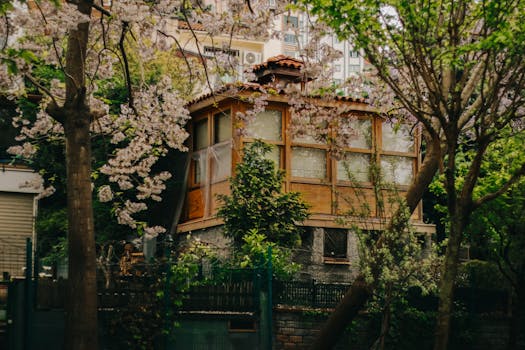
Urban Green Spaces: The Future of Outdoor Living in European Cities by 2025
Urban Green Spaces are becoming increasingly important in European cities, and for good reason. As the world becomes more urbanized, the need for green spaces has never been more pressing. Urban Green Spaces are not just aesthetically pleasing, but they also provide numerous benefits for both the environment and human health. In this article, we will explore the future of outdoor living in European cities and how urban green spaces will play a vital role in shaping it.
What are Urban Green Spaces?
Urban Green Spaces refer to any area of greenery in an urban environment, including parks, gardens, green roofs, and even street trees. These spaces provide a range of ecosystem services, including air purification, noise reduction, and climate regulation. They also offer opportunities for recreation, socialization, and relaxation, making them an essential component of urban planning.
The Benefits of Urban Green Spaces
The benefits of urban green spaces are numerous and well-documented. Some of the most significant advantages include:
- Improved air quality: Urban green spaces can help to remove pollutants from the air, improving respiratory health and reducing the risk of respiratory diseases.
- Reduced urban heat island effect: Green spaces can help to mitigate the urban heat island effect, which occurs when built-up areas absorb and retain heat, making cities hotter than surrounding rural areas.
- Increased biodiversity: Urban green spaces can provide habitats for a range of plant and animal species, helping to maintain biodiversity in urban areas.
- Improved mental health: Spending time in nature has been shown to have a positive impact on mental health, reducing stress and anxiety and improving mood.
- Increased social connections: Urban green spaces can provide opportunities for socialization and community engagement, helping to build stronger, more connected communities.
The Future of Outdoor Living in European Cities
As we look to the future, it is clear that urban green spaces will play a vital role in shaping outdoor living in European cities. By 2025, we can expect to see a significant increase in the number and quality of urban green spaces, as cities prioritize sustainability and green infrastructure. Some of the key trends that will shape the future of outdoor living include:
- Green roofs and walls: Green roofs and walls will become increasingly popular, as cities seek to maximize the use of urban space and reduce the urban heat island effect.
- Urban agriculture: Urban agriculture will become more prevalent, as cities seek to increase food production and reduce their reliance on industrial agriculture.
- Community-led initiatives: Community-led initiatives will play a key role in shaping the future of outdoor living, as residents take ownership of their urban green spaces and work to create vibrant, sustainable communities.
- Technological innovation: Technological innovation will continue to play a major role in shaping the future of outdoor living, with advances in fields such as green infrastructure, renewable energy, and smart city technology.
Conclusion
In conclusion, urban green spaces are the future of outdoor living in European cities. As we look to 2025 and beyond, it is clear that these spaces will play a vital role in shaping the health, happiness, and sustainability of urban communities. By prioritizing green infrastructure and community-led initiatives, cities can create vibrant, thriving spaces that benefit both people and the planet.






